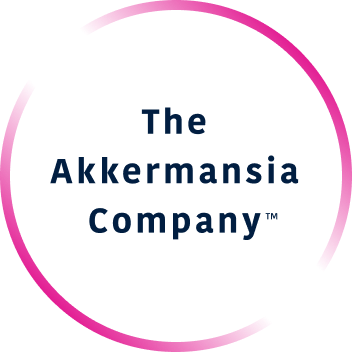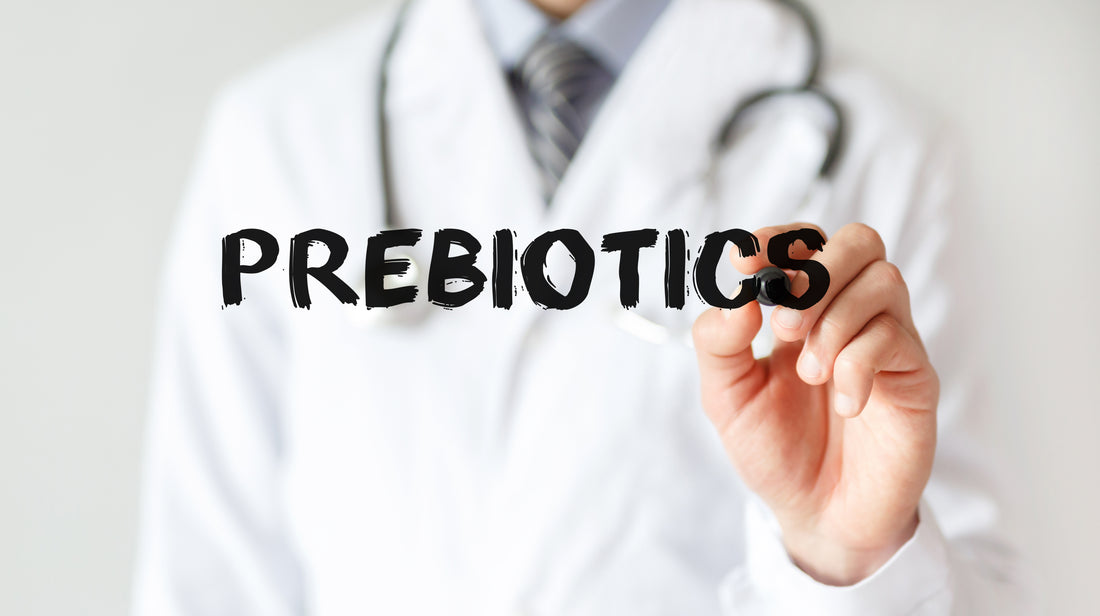Reviewed by Dr Marion Leclerc, PhD, HDR
Prebiotics are necessary in our diet to support the health of good gut bacteria and our digestive health. Understanding the connections between nutrition and gut health can have a significant impact on your overall health. In this article, we examine in greater detail the nature and function of prebiotics, as well as their availability in your diet.
What Are Prebiotics
Prebiotics naturally occur in many plant foods. This includes certain fruits, vegetables, beans, and whole grains. Some examples include almonds, bananas, wholegrain wheat and corn, flax seeds, cabbage, peas, chickpeas, eggplant, asparagus, raw leafy greens. Prebiotics are components of non-digestible plant fibers. However, since there are many ways to explain what prebiotics are, the International Association of Probiotics and Prebiotics (IAPP) came to a consensus on best defining prebiotics.
The International Association of Probiotics and Prebiotics defines prebiotics as "a substrate that is selectively utilized by host microorganisms conferring a health benefit".1 They also call out that "there are three key components of a prebiotic and its function which include: a substance, a physiologically beneficial effect, and a microbiota-mediated mechanism."1
How Prebiotics Influence Your Gut Microbiome
Since prebiotics are not able to be broken down by our digestive enzymes, they rely on the microbes in our colon to break them down through a process known as fermentation.2
The result of this process yields beneficial short-chain fatty acids (SCFAs) such as butyrate, propionate and acetate which provide nutrients for the cells of the colon (colonocytes).2 These prebiotics are also utilized by selective beneficial bacteria in the colon, including Bifidobacterium and probiotic Lactobacilli, as a food source, providing them with energy.2,3
This ecosystem helps to maintain the viability of the beneficial bacteria in the gut and may block the receptor sites for harmful bacteria from attaching.2 These prebiotics positively impact the quantity and quality of beneficial bacteria, supporting the gut environment and overall well-being of the host. Basically, prebiotics support the resident probiotics in the gut which helps to positively change your microbiome and support your gastrointestinal health.
Types of Prebiotics
Prebiotics are found naturally in foods and also can be found in dietary supplementation as synthetic forms. The most common prebiotics are soluble fibers which include inulin, and several oligosaccharides1. Oligosaccharides are carbohydrates that have approximately 3 to 10 simple sugar molecules, either glucose or fructose, linked together.
Inulin
Inulin is a prebiotic that is naturally found in wheat, fruits such as bananas, and vegetables including Jerusalem artichokes, onions, garlic, and asparagus.5 This prebiotic is often used as a dietary supplement but also added to probiotic supplements, and to some foods and beverages. If you're checking out the ingredients on a food label, you may see inulin listed as chicory root extract, oligosaccharide, or oligofructose.6
Though there is not any recommended daily allowance established for prebiotics, it is always recommended that you talk to your healthcare provider before you start using inulin or any dietary supplements.
Fructooligosaccharides
Fructooligosaccharides (FOS) are a version of inulin that are similarly found in foods such as artichokes, onions, leeks, and garlic. FOS is a form of an oligosaccharide fiber that is not digested in the small intestine but rather used as a fuel in the colon by bacteria such as Bifidobacterium spp.7
Fructooligosaccharides are considered functional oligosaccharides and may provide health benefits to the host by supporting the immune system helping to stimulate the growth of good bacteria or probiotics in the gut and also supporting digestive health.8,9 It is sometimes added to food products and is often used to improve the texture of certain foods, lending to a smooth texture.8
Galactooligosaccharides
Galactooligosaccharides (GOS) are another group of functional oligosaccharides. As opposed to the usual dietary oligosaccharides, including lactose, sucrose, and maltose, which are able to be digested via the normal digestive route and then used for energy by the body, functional oligosaccharides are fermented in the gut by bacteria and support healthy gut bacteria.9
Functional galactooligosaccharides may support the gastrointestinal tract, regulate the growth and viability of intestinal microbiota, support healthy lipid (fat) metabolism, enhance mineral absorption, and also support a healthy immune system.9
To support and stimulate the development/colonization of bifidobacteria of the gut, to mimic the microbiome of a breastfed infant, both GOS and FOS have been added to infant formula. In addition to FS and GOS, other functional oligosaccharides include Xylooligosaccharides (XOS), isomaltose oligosaccharides, and human milk oligosaccharides (HMOs).9
Human Milk Oligosaccharides
Human milk oligosaccharides (HMOs) are natural components found in breast milk and may be beneficial for a breastfed infant's health because these HMOs provide immune support from Bifidobacterium that depend on human milk oligosaccharides that are produced in the gut.10
Non-Carbohydrate Prebiotics
These are compounds such as flavonols that are not carbohydrates but are considered to function as a prebiotic. Flavonols are found in cacao seeds and foods such as cocoa.4
Potential Benefits of Prebiotics
As you can see prebiotics support the growth and viability of beneficial probiotics in the gut. This means that prebiotics have the potential to improve human health by controlling the balance of the intestinal microbiome. This relationship is noted to be symbiotic.
Some of the benefits that may be attributed to prebiotics include the following:
- They may support healthy digestive function
- They may support a healthy immune system
- May support healthy glucose and fat metabolism
- They help to stimulate the growth of good probiotics already existing in the gut, fostering a healthy gut environment
- They can be added to supplement one's diet through fortified foods and beverages and dietary supplements
Summing It Up
The science that unravels the importance of prebiotics is fascinating. We are now able to understand more clearly that both pre- and probiotics are an integral part of supporting a healthy digestive and immune system. By eating a diet that is rich in fiber and whole foods, such as fruits, vegetables, and whole grains, you can provide a healthy dose of dietary prebiotics to your gut biome. Prebiotics serve as a food source for probiotics introduced through dietary supplements and also provide fuel for those probiotics already present in the colon such as Bifidobacterium and Lactobacilli. Prebiotics in conjunction with beneficial bacteria (probiotics) can help to foster a robust and prosperous gut microbiome.
As always, your best point of reference for any questions you may have regarding your health and prebiotics and probiotics is your healthcare provider.
*These statements have not been evaluated by the Food and Drug Administration. This product is not intended to diagnose, treat, cure, or prevent any disease.
References
- Danielle. Prebiotics - International Scientific Association for Probiotics and Prebiotics (ISAPP). 6 July 2022, isappscience.org/for-scientists/resources/prebiotics. Prebiotics - International Scientific Association for Probiotics and Prebiotics (ISAPP). Accessed September 17, 2024.
- Lupton, Joanne R. "Microbial degradation products influence colon cancer risk: the butyrate controversy." The Journal of nutrition vol. 134,2 (2004): 479-82. doi:10.1093/jn/134.2.479. https://pubmed.ncbi.nlm.nih.gov/14747692/.
- Cummings, J H, and G T Macfarlane. "Gastrointestinal effects of prebiotics." The British journal of nutrition vol. 87 Suppl 2 (2002): S145-51. doi:10.1079/BJNBJN/2002530. https://pubmed.ncbi.nlm.nih.gov/12088511/.
- Davani-Davari, Dorna et al. "Prebiotics: Definition, Types, Sources, Mechanisms, and Clinical Applications." Foods (Basel, Switzerland) vol. 8,3 92. 9 Mar. 2019, doi:10.3390/foods8030092. https://pmc.ncbi.nlm.nih.gov/articles/PMC6463098/.
- INULIN: Overview, Uses, Side Effects, Precautions, Interactions, Dosing and Reviews. http://www.webmd.com/vitamins/ai/ingredientmono-1048/inulin. Accessed September 17, 2024.
- Rd, Barbie Cervoni. "Inulin: Does This Prebiotic Fiber Help Digestion?" Verywell Health, 10 Oct. 2024, www.verywellhealth.com/the-health-benefits-of-inulin-4587258. Accessed September 17, 2024.
- Dou, Yuqi et al. "Effect of Fructooligosaccharides Supplementation on the Gut Microbiota in Human: A Systematic Review and Meta-Analysis." Nutrients vol. 14,16 3298. 12 Aug. 2022, doi:10.3390/nu14163298 https://pmc.ncbi.nlm.nih.gov/articles/PMC9413759/.
- Alatorre-Santamaría, S., et al. "Fructooligosaccharides (FOS)." Springer eBooks, 2022, pp. 1–30. https://doi.org/10.1007/978-3-030-81404-5_31-1. https://link.springer.com/referenceworkentry/10.1007/978-3-030-81404-5_31-1
- Mei, Zhaojun, et al. "Biological Activity of Galacto-oligosaccharides: A Review." Frontiers in Microbiology, vol. 13, Sept. 2022, https://doi.org/10.3389/fmicb.2022.993052. https://www.frontiersin.org/journals/microbiology/articles/10.3389/fmicb.2022.993052/full
- Laursen, Martin Frederik. "Bifidobacteria in the Infant Gut Use Human Milk Oligosaccharides: How Does This Lead to Health Benefits?, 24 June 2022, isappscience.org/bifidobacteria-in-the-infant-gut-use-human-milk-oligosaccharides-how-does-this-lead-to-health-benefits. Accessed September 17. 2024.




